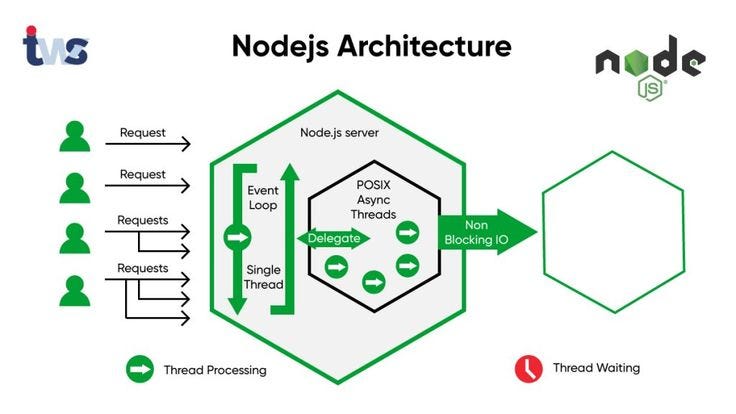The web development landscape is in a constant state of flux, with frameworks and tools evolving at a breakneck pace. For developers building with React, staying ahead of the curve is not just an advantage—it’s a necessity. In this dynamic ecosystem, the latest updates from the Next.js team represent a significant leap forward, promising to redefine performance, developer experience, and production readiness. This wave of innovation, part of the ongoing evolution in the world of React News, brings production-grade Turbopack builds, a more powerful and flexible Node.js middleware environment, and a deeply integrated TypeScript experience that catches errors before they ever reach the browser.
This article dives deep into these game-changing features. We’ll explore how the Rust-based Turbopack is set to replace Webpack for faster, more efficient production builds, and what that means for your deployment pipeline. We will dissect the enhancements to Next.js Middleware, which now offers greater access to Node.js APIs, unlocking new patterns for authentication, A/B testing, and internationalization. Finally, we’ll examine the nuanced improvements to the TypeScript developer experience, showcasing how stricter type-safety and intelligent feedback loops can drastically reduce bugs and improve code maintainability. Whether you’re a seasoned Next.js developer or just exploring the framework, these updates offer tangible benefits that will enhance your workflow and the performance of your applications.
Section 1: Turbopack Unleashed: The New Era of Production Bundling
For years, Webpack has been the de facto bundler for a vast majority of JavaScript projects, including Next.js. While powerful, its performance, especially on large-scale applications, has been a persistent bottleneck. The latest Next.js News signals a monumental shift with the promotion of Turbopack to production readiness. Built from the ground up in Rust by the creators of Webpack and Turborepo, Turbopack promises dramatic improvements in build times and overall performance.
What is Turbopack and Why Does It Matter?
Turbopack is an incremental bundler optimized for speed. Unlike traditional bundlers that re-process large chunks of your application on every change, Turbopack leverages aggressive caching at the function level. This means it never does the same work twice, leading to near-instantaneous updates during development and significantly faster builds for production. This development is a major event in the world of Webpack News and Vite News, as it introduces a powerful new competitor focused purely on performance.
For production, this translates to:
- Faster CI/CD Pipelines: Reduced build times mean quicker deployments, allowing teams to ship features faster.
- Lower Infrastructure Costs: Shorter build processes consume fewer compute resources.
- Improved Developer Morale: Less time spent waiting for builds means more time spent coding.
Enabling Turbopack for your production builds is straightforward. You can opt-in by adding a simple flag to your build script in `package.json`.
// package.json
{
"scripts": {
"dev": "next dev --turbo",
"build": "next build --turbo",
"start": "next start",
"lint": "next lint"
}
}By adding the --turbo flag to the `build` command, you instruct Next.js to use Turbopack instead of Webpack. The development server has benefited from Turbopack for some time, but its stability for production workloads is the real game-changer here, marking significant progress in Turbopack News and challenging the dominance of tools like Vite and Rollup.
Section 2: Supercharging Middleware with Expanded Node.js APIs

Next.js Middleware allows you to run code before a request is completed, enabling powerful use cases like authentication, redirects, and personalizing content at the edge. Previously, the middleware runtime was restricted to a limited “Edge-friendly” subset of APIs to ensure performance and security. The latest updates significantly expand these capabilities, providing more direct access to Node.js APIs and making middleware more versatile than ever.
From a Restricted Sandbox to a Powerful Environment
This evolution in Node.js News for the Next.js ecosystem means developers are no longer as constrained. While the Edge Runtime is still the default for its speed, you can now explicitly opt-in to the Node.js runtime for your middleware, unlocking access to a wider range of native modules and npm packages that rely on them. This is particularly useful for tasks that require file system access, native crypto libraries, or interacting with databases that have Node.js-specific drivers.
Consider a scenario where you need to block requests from a dynamic list of IP addresses stored in a local file. With the enhanced Node.js runtime, this becomes possible.
// middleware.ts
import { NextResponse } from 'next/server';
import type { NextRequest } from 'next/server';
import { promises as fs } from 'fs';
import path from 'path';
// Opt-in to the Node.js runtime
export const runtime = 'nodejs';
async function getBlockedIps(): Promise<Set<string>> {
try {
// Access the file system, a Node.js specific API
const filePath = path.join(process.cwd(), 'blocked-ips.json');
const data = await fs.readFile(filePath, 'utf-8');
const ips: string[] = JSON.parse(data);
return new Set(ips);
} catch (error) {
console.error('Failed to load blocked IPs:', error);
return new Set();
}
}
export async function middleware(request: NextRequest) {
const requestIp = request.ip ?? '127.0.0.1';
const blockedIps = await getBlockedIps();
if (blockedIps.has(requestIp)) {
// Return a 403 Forbidden response
return new NextResponse('Access denied.', { status: 403 });
}
return NextResponse.next();
}
export const config = {
matcher: '/api/sensitive-data/:path*',
};In this example, setting `export const runtime = ‘nodejs’;` is the key. It tells Next.js to execute this middleware in a Node.js environment, granting it access to the `fs` and `path` modules. This bridges the gap between the edge and the server, offering flexibility that rivals backend frameworks like Express.js News or Fastify News for specific routing tasks.
Section 3: A Tighter TypeScript DX for Robust, Error-Free Code
A great developer experience (DX) is paramount for productivity and code quality. The latest TypeScript News within Next.js focuses on tightening the feedback loop, providing more accurate type-safety, and catching potential errors directly in your editor. These are not just minor tweaks; they represent a deeper integration that helps developers write more robust and maintainable applications.
Enhanced Type Safety for Pages and Layouts
One of the most significant improvements is the introduction of stricter and more accurate types for page and layout props, particularly for `searchParams`. In previous versions, `searchParams` was often typed as a generic object, forcing developers to perform manual type casting and validation. Now, Next.js provides more precise types, reducing the likelihood of runtime errors.
Let’s look at a practical example of a search page that needs to handle pagination and sorting parameters from the URL query string.
// app/products/page.tsx
import ProductGrid from '@/components/ProductGrid';
// The props for the page are now more accurately typed
interface ProductsPageProps {
searchParams: {
page?: string;
sortBy?: 'price' | 'name';
order?: 'asc' | 'desc';
};
}
export default function ProductsPage({ searchParams }: ProductsPageProps) {
// Safely parse parameters with fallbacks
const currentPage = parseInt(searchParams.page ?? '1', 10);
const currentSortBy = searchParams.sortBy ?? 'name';
const currentOrder = searchParams.order ?? 'asc';
// TypeScript now understands the possible values of sortBy and order,
// preventing typos and invalid values during development.
// For example, trying to access searchParams.sort will result in a TS error.
return (
<div>
<h1>Our Products</h1>
<ProductGrid
page={currentPage}
sortBy={currentSortBy}
order={currentOrder}
/>
<div>
);
}This improved type-safety, combined with tools like ESLint News and Prettier, creates a powerful, self-documenting development environment. The editor can now provide intelligent autocompletion and immediate feedback if you attempt to use an invalid search parameter. This proactive error checking is a hallmark of modern frameworks and a welcome addition for any team serious about code quality. It’s a level of integration that developers using other frameworks like Svelte News or Vue.js News have also come to expect from their ecosystems.

Section 4: Best Practices and Optimizing Your Workflow
Adopting new features is only half the battle; leveraging them effectively is what truly elevates your projects. Here are some best practices and considerations for integrating these Next.js updates into your development workflow.
When to Use Turbopack vs. Webpack
While Turbopack is now production-ready, some complex Webpack configurations or plugins may not have a direct equivalent yet.
- Use Turbopack for: Most new and existing Next.js projects. The performance gains are substantial and it supports the vast majority of Next.js features out of the box.
- Stick with Webpack if: Your project relies heavily on custom, niche Webpack plugins that are critical to your build process and do not yet have Turbopack support. Always test your build thoroughly after migrating.
Choosing the Right Middleware Runtime
The ability to choose between the Edge and Node.js runtimes for middleware is powerful but requires careful consideration.
- Default to Edge Runtime: For most middleware (authentication checks, redirects, A/B testing), the Edge runtime is faster and more cost-effective. It runs closer to your users, reducing latency.
- Use Node.js Runtime Sparingly: Opt for the Node.js runtime only when you absolutely need access to native Node.js APIs (e.g., file system, specific crypto libraries, or certain database drivers). Be aware that this may introduce slightly higher latency as the code runs in a specific region, not at the edge.
Leveraging TypeScript for Maximum Impact
To get the most out of the improved TypeScript DX, ensure your project is configured correctly.
- Enable `strict` mode: In your `tsconfig.json`, make sure `”strict”: true` is enabled to take full advantage of TypeScript’s error-checking capabilities.
- Use Typed Routes: Leverage Next.js’s experimental typed routes feature for even greater safety when using `next/link` or `next/navigation`. This prevents broken links due to typos in paths.
// next.config.mjs
/** @type {import('next').NextConfig} */
const nextConfig = {
experimental: {
// This enables type-safe routing, preventing typos in Link components
typedRoutes: true,
},
};
export default nextConfig;Combining these features with a robust testing strategy using tools like Jest, Vitest, or end-to-end frameworks like Cypress News and Playwright News, ensures your application is not only fast and feature-rich but also reliable and maintainable.
Conclusion: The Future is Faster and Smarter
The latest advancements in Next.js are more than just incremental updates; they represent a strategic push towards a faster, more efficient, and developer-friendly web. The stabilization of Turbopack for production builds marks a new chapter in frontend performance, directly addressing one of the most significant pain points in modern development: slow build times. The expansion of middleware capabilities provides the flexibility needed to handle complex server-side logic at the request level, blurring the lines between frontend and backend. Finally, the relentless focus on improving the TypeScript experience empowers developers to write cleaner, safer, and more resilient code.
By embracing these updates, development teams can accelerate their deployment cycles, enhance application performance, and build more robust products. As the JavaScript ecosystem continues its rapid evolution, with constant updates in areas like Bun News and Deno News, Next.js solidifies its position as a forward-thinking framework that prioritizes both the end-user and the developer. The next step is to start experimenting: enable Turbopack in a staging environment, refactor a piece of middleware to leverage the Node.js runtime, and tighten your TypeScript configurations. The future of web development is here, and it’s incredibly fast.

